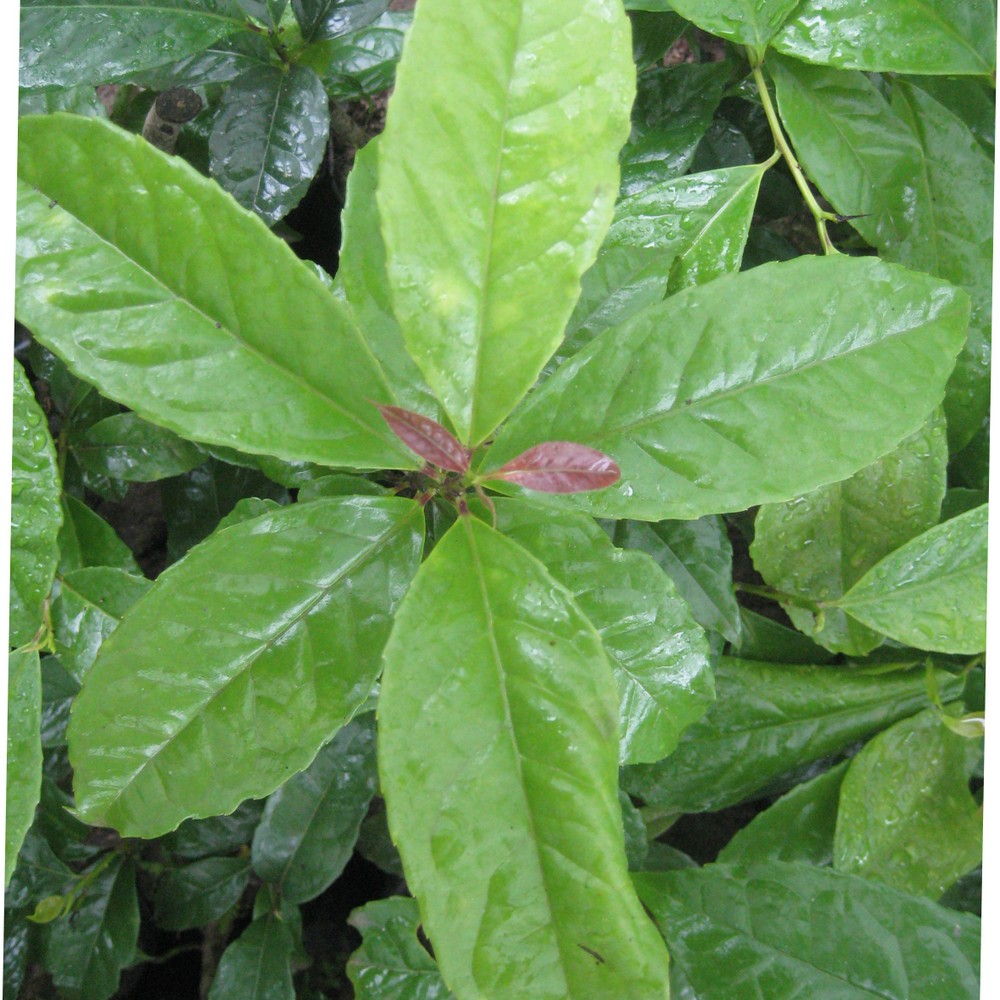Ilex guayusa
(Ilex guayusa)

Description
Ilex guayusa is a species of tree of the holly genus, native to the Amazon Rainforest. One of four known caffeinated holly trees, the leaves of the guayusa tree are harvested fresh and brewed like a tea for their stimulative effects. Ilex guayusa is an evergreen dioecious tree which grows 6–30 m (20–98 ft) tall. The leaves are ovate, elliptic, oblong or lanceolate; 7–22 cm (2.8–8.7 in) long, 2.5–7 cm (0.98–2.76 in) wide; with serrate or dentate margin. The flowers are small and white, arranged in thyrses. The fruit is spherical and red, 6–7 mm (0.24–0.28 in) in diameter. I. guayusa is native to the upper Amazonian regions of Ecuador, Peru, and southern Colombia, between 200–2,000 m (660–6,560 ft) of elevation. However, it has also been collected in Bolivia in 1939. It is present in evergreen or deciduous premontane forests, especially ones dominated by Dictyocaryum palms. Guayusa has been collected only rarely in the wild by botanists and is known almost exclusively as a cultivated plant (especially in the Ecuadorian provinces of Napo and Pastaza). This species is found wild and cultivated in sandy-loamy soils of pH 4.34–5.01 with low cation-exchange capacity and high metal content. The vegetation type preferred is lowland and premontane, neotropical jungle where conditions of soil, precipitation and humidity are appropriate for its development. Despite being a monoecious species and prone to floral polygamy, Ilex guayusa appears to yield little fertile material, so it relies mostly on asexual reproduction (basal shoots, sprouts and suckers). In its initial growth stages, Ilex guayusa behaves as an understory species, becoming a shrub with spreading branches when it receives higher amounts of light, eventually becoming a tree. The earliest evidence of human utilization of this species is a 1,500-year-old bundle of guayusa leaves found in a medicine man's tomb in the Bolivian Andes, far beyond the natural range of the plant. Father Juan Lorenzo Lucero reported in 1683 the daily consumption of guayusa in infusions by the Jivaroan peoples. In the 18th century, several missionaries in Colombia, Ecuador and Peru wrote about the uses of the plant, and some of them also consumed the infusion citing digestive and stimulant properties. The Jesuits knew about the medicinal uses of the plant and traded it actively. A grove found in 1857 by Richard Spruce near the town of Baños, Ecuador was supposedly cultivated since precolumbian times.
Taxonomic tree:







